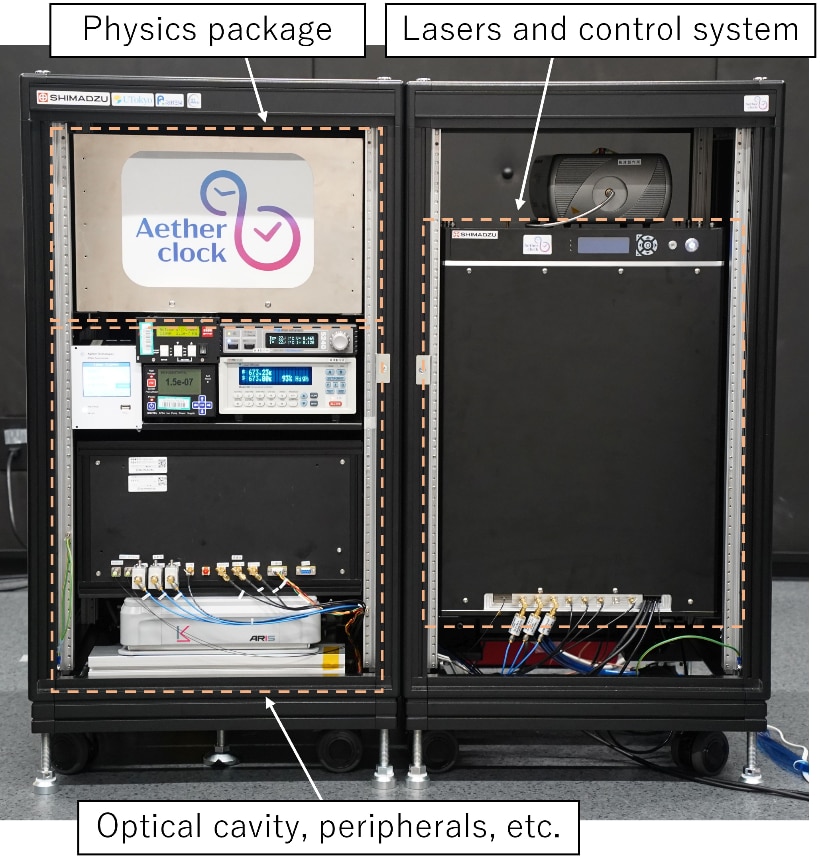November 22, 2024 | News & Notices
Successful Development of the World’s First Compact and Robust High-Precision Optical Lattice Clock with a 250-liter Volume
— Toward Real-World Applications of Optical Lattice Clocks —
As part of the JST-Mirai Program, researchers from The University of Tokyo and RIKEN, in collaboration with Shimadzu Corporation and JEOL Limited, have successfully developed a compact and robust high-precision optical lattice clock. Optical lattice clocks, which utilize the optical transition of atoms confined in standing waves of light, offer a timekeeping uncertainty that is hundreds of times smaller than that of cesium atomic clocks, which currently define the SI second. The precision of an optical lattice clock corresponds to a deviation of just one second over ten billion years, making it a strong candidate for redefining the SI second.
This newly developed optical lattice clock has a volume of 250 liters, approximately one-quarter the size of a transportable model previously developed by the same team. This miniaturization was achieved by embedding the shim coils within the vacuum chamber of the physics package and by densely integrating lasers and control electronics. The lasers and the control systems are designed to withstand temperature fluctuations, vibrations, and long-term aging, ensuring reliable performance across diverse environments.
This compact and durable optical lattice clock is expected to find applications beyond traditional timekeeping, including advanced scientific research and practical uses such as relativistic geodesy.

A compact optical lattice clock with a volume of 250 liters has been developed. The system includes a physics package for conducting spectroscopy on the clock transition within a vacuum chamber, lasers for manipulating atoms, a control system for clock operation, and an optical cavity that serves as a frequency reference for the lasers. Laser-cooled atoms are trapped in the optical lattice, and the clock transition frequency is measured with high precision in a low-temperature blackbody radiation shield.


